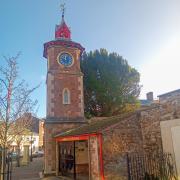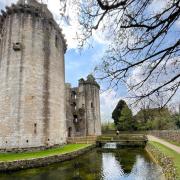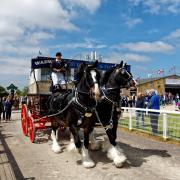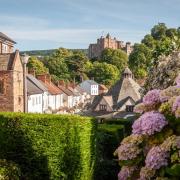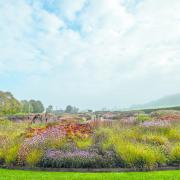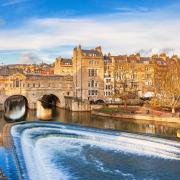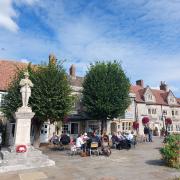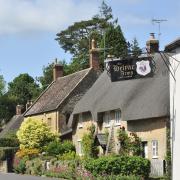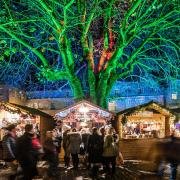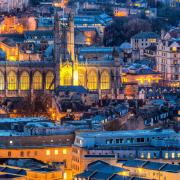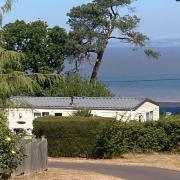Simone Stanbrook discovers the many tantalising attractions of this lovely area
An area of beauty
In 1991 the Blackdown Hills were designated an Area of Outstanding Natural Beauty (AONB). As such, it is a nationally important and protected landscape, covering an area of more than 140 square miles and straddling the Somerset-Devon border. Clare Groom, Communications Officer for the Blackdown Hills AONB, explains:
‘The Blackdown Hills was designated an AONB due to their distinctive landscape, scenic quality and natural and cultural heritage. It is a tranquil and relatively wild area which is rich in wildlife. It epitomises the English countryside with hedgerows and copses, small farms with intricate field patterns, deep valleys and narrow, winding lanes.’
It is a place of pastoral and timeless beauty with a…..
Richness of History
The landscape of the Blackdowns has evolved since the last Ice Age and evidence of human occupation, with its associated shaping of the region, dates from prehistoric times. Bronze Age barrows are found here; evidence of later Roman occupation follows.
Iron Age Hillforts rise out of their surroundings, such as Castle Neroche, which later became the site of a Norman motte and bailey castle. Culmstock Beacon (in the Devon part of the Blackdowns) was one of a series of beacons used to alert the able-bodied men of England to the imminence of the Spanish Armada.
More recently, the 19th century Wellington Monument was built to commemorate the Duke’s victory at the Battle of Waterloo. This is a place from which to enjoy…..
Vast views
The iconic Monument rises above Wellington Hill and is in the care of the National Trust. It is itself visible from all around – and, after years of being ‘bagged up’, has at last had its scaffolding (all eight miles of it) removed. Enjoy its superb viewpoint.

Staple Hill is the highest point of the Blackdowns at 315m. From here, on a clear day, Wales is visible. Castle Neroche also commands thirst-quenching views: towards Exmoor, the Quantocks, the Mendips and Glastonbury Tor.
Hop across the border to Culmstock Beacon for a splendid panorama across Devon and Somerset.
Trees and the changing seasons
Much of the Blackdowns is wooded with a variety of trees: oak, ash, birch, the darkness of conifers. Towering beeches create a natural cathedral, the fresh young leaves, sometimes referred to as ‘beech pennies’, bright green against a spring sky.
Their shade changes during summer, casting dappled light. Come autumn, their dress is a resplendence of orange hues before the traceried architecture of winter is exposed above a colourful woodland carpet.

Vibrant villages
Nestle in the Blackdowns are active communities that stretch back centuries. A total of 39 parishes lie wholly or partly within the AONB. The likes of Buckland St Mary, Staple Fitzpaine, Hemyock with its castle (on the Devon side) and Churchinford, which hosts the annual Blackdown Food and Craft Fair each summer.
In many of these villages will be found the added attraction of…..
Enticing inns
The award-winning, 17th century Candlelight Inn at Bishopswood is a case in point. Known for its food and hospitality, cosy fires welcome you in winter.
Other hostelries to look out for in the area include The Holman Clavel at Culmhead and the Half Moon Inn at Clayhidon, just over the Devon border, which has glorious views from its garden.
From many of these inns there are some superb…..
Walks
The Blackdowns are criss-crossed with footpaths and bridleways. The most detailed maps of the area are the OS Explorers, 115, 116 and 128 which cover both the Somerset and Devon regions of the AONB.
One of my favourite wanders is in the woods at Castle Neroche and the East Deane Way passes through here.
Whilst walking you have a good chance of encountering some of the…..
Wildlife
Creatures great and small make their home in these hills. The broad-leaved woodlands and thick connecting hedgerows make ideal habitats for a variety of birds and mammals, as does heathland, such as that found on Culmstock Beacon.
One endearing creature you’re not likely to see, but who does live here, is the hazel dormouse. Nest boxes have been installed to encourage these little golden scraps of loveliness. Extraordinarily, a black dormouse was found here in 2016, the only time one has been recorded in the UK; the unusual colouration is caused by a recessive gene. Several sites in the area are now part of the National Dormouse Monitoring Programme.

Diversity of habitat supports a richness of wildlife and….
Wildflower meadows
These are a part of the mosaic of habitats. Goren Farm, on the Devon side of the border, is renowned for its wildflower meadows and regularly opens to the public. Strolling through these meadows is quite magical. Look out for open days in the National Garden Scheme’s Yellow Book or on the Blackdown website.
Traditional crafts and skills
These abound in the area; the Blackdown Hills Artists and Makers is an organisation for creators of various persuasions who live and work here. Emma Finch is a basket weaver working in the Blackdowns who sources her willow from the Somerset Levels, continuing one of the world’s oldest crafts.
Legends
These are part of the atmosphere that charms rural areas and the Blackdowns are no exception. One tale tells of the Devil Stones in Staple Fitzpaine, sandstone boulders reputedly thrown by the Devil at the builders of the church. Some say that if you prick them with a pin they bleed.
Visit the Blackdowns after dark and you may be rewarded with beautiful…..
Night skies
According to the Council to Protect Rural England the Blackdowns are the fifth darkest AONB in the country. Light pollution can have a seriously detrimental effect on wildlife, impacting the natural rhythms of migration, reproduction and feeding. It is also a waste of precious resources.
The Blackdowns have a very low level of brightness at night, allowing wildlife to live naturally and visitors to enjoy the deep, dark velvet of a star-studded night sky. Look up and pause: a moment for reflection on our place within the vastness of time and space.





